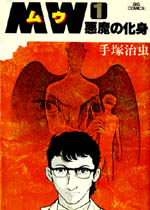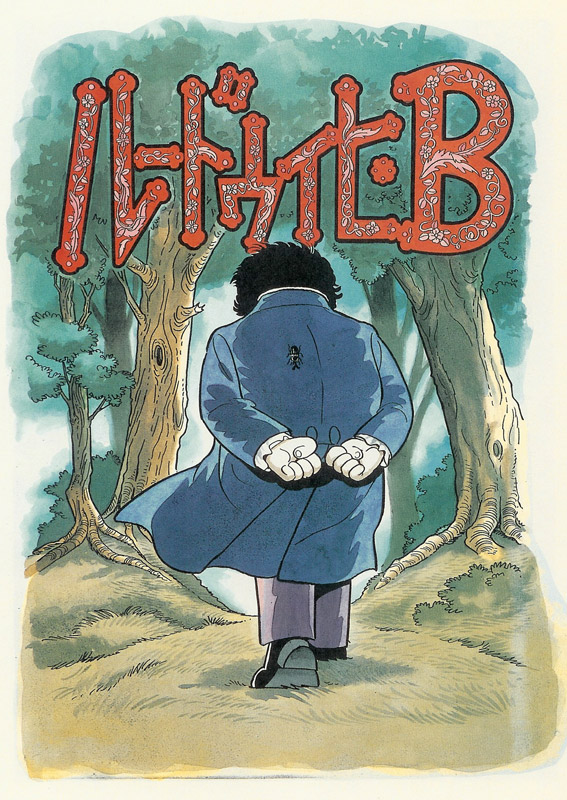
Currently browsing


MW (Manga)

Ludwig B (Manga)

Unico (DMP)
Bibliography
of Scholarly works on Osamu Tezuka
Philip Brophy ed., Tezuka, the Marvel of Manga (exhibition catalogue). Melbourne, National Gallery of Victoria, 2007.
Hervé Brient ed., Osamu Tezuka: dissection d’un mythe. Versailles: Éditions H (Manga 10,000 images), 2009.
Fred Ladd and Harvey Deneroff, Astro Boy and Anime Come to the Americas. Jefferson, McFarland & Company, 2009.
Helen McCarthy, The Art of Osamu Tezuka: God of Manga. New York, Abrams ComicArts, 2009.
Susanne Phillips, Tezuka Osamu. Figuren, Themen und Erzählstrukturen im Manga-Gesamtwerk. Munich: Iudicium, 2000.
500 Manga Heroes and Villains
by Helen McCarthy
This inexpensive but thick little book contains entries on a truly astounding range of the most important and influential manga characters of all time. Unlike most books about manga which focus too exclusively on recent and popular series, this has comprehensive coverage of older and rarer works from many genres, from Junji Itto’s Uzumaki to Louis de Pointe du Lac, the manga adaptation of Anne Rice’s Interview with a Vampire series, plus supplemental histories of manga in general, the shoujo and mecha genres and more.
The coverage of Tezuka’s works is spectacular, with entries on Black Jack, Bukku Bukk, Kenichi, Dr.… Read the rest
Jungle Emperor Leo & Kimba the White Lion – Part III: Discussion
Reflection on the work as a whole
Upon viewing the works as a whole, or even with more insight into Tezuka’s other writings, there becomes apparent something more to the tales of Leo than a precursory examination reveals. Jungle Emperor could easily fall into the same category as Lost World just as Kimba could easily be shuffled among hundreds of other Saturday morning cartoons, yet each bring with them the strength of Tezuka’s best work and deserve more attention than the medium might suggest.
Like Astroboy, at first Leo is small and innocent and must defend himself and new friends against a harsh world, but Leo never quite falls into this formula in part because he isn’t a super hero.
Rock Holmes: Transformation – Part 4: AFTERLIFE
Rock Holmes: Transformation – Part 0: INTRODUCTION
Rock Holmes: Transformation – Part 1: CHILDHOOD
Rock Holmes: Transformation – Part 2: TRANSFORMATION
Rock Holmes: Transformation – Part 3: RESOLUTION
Rock Holmes: Transformation – Part 4: AFTERLIFE
Section 1: Last Years
Rock had few appearances in Tezuka after Buddha and Black Jack. In Rainbow Parakeet “Twelve Angry Men,” (1981) he cameos as the clever young son of a wealthy man who commits theft just for the thrill of it, and gets what he deserves. In Say Hello to Bookilla (1985) he plays a slapstick role (under the name Makube Rokuro) investigating a haunted TV station and being beaten to a pulp on numerous occasions.… Read the rest
Rock Holmes: Transformation – Part 3: RESOLUTION
Rock Holmes: Transformation – Part 0: INTRODUCTION
Rock Holmes: Transformation – Part 1: CHILDHOOD
Rock Holmes: Transformation – Part 2: TRANSFORMATION
Rock Holmes: Transformation – Part 3: RESOLUTION
Rock Holmes: Transformation – Part 4: AFTERLIFE
Black Jack and Buddha (1972-1978)
Section 1: DISTRUST
We have now seen Rock at his worst, and also Tezuka at his worst, in the late sixties and early seventies when repeated conflicts with editors and publishers and apparent betrayals by friends seriously hurt his production studio and interfered with the publication of many series, including Phoenix and Vampires. Tezuka had fought loosing battles over control of his manga, and especially over his anime which he was never satisfied with as producers insisted on happier endings and watered-down political messages.… Read the rest
Rock Holmes: Transformation – Part 2: TRANSFORMATION
Rock Holmes: Transformation – Part 0: INTRODUCTION
Rock Holmes: Transformation – Part 1: CHILDHOOD
Rock Holmes: Transformation – Part 2: TRANSFORMATION
Rock Holmes: Transformation – Part 3: RESOLUTION
Rock Holmes: Transformation – Part 4: AFTERLIFE
Makube Rokuro (1966-1971)
While almost all of Tezuka’s recurring characters continued to play the same types of roles in all their appearances from beginning to end, Rock underwent a unique and definitive transformation in 1966, which divided not only his career but Tezuka’s in half. Vampires (available in French), serialized from 1966 to 1969 was an entirely new kind of story for Tezuka in which he took as his subject the innate animal desire to do evil which, he believed, lives stifled inside all human beings.… Read the rest




